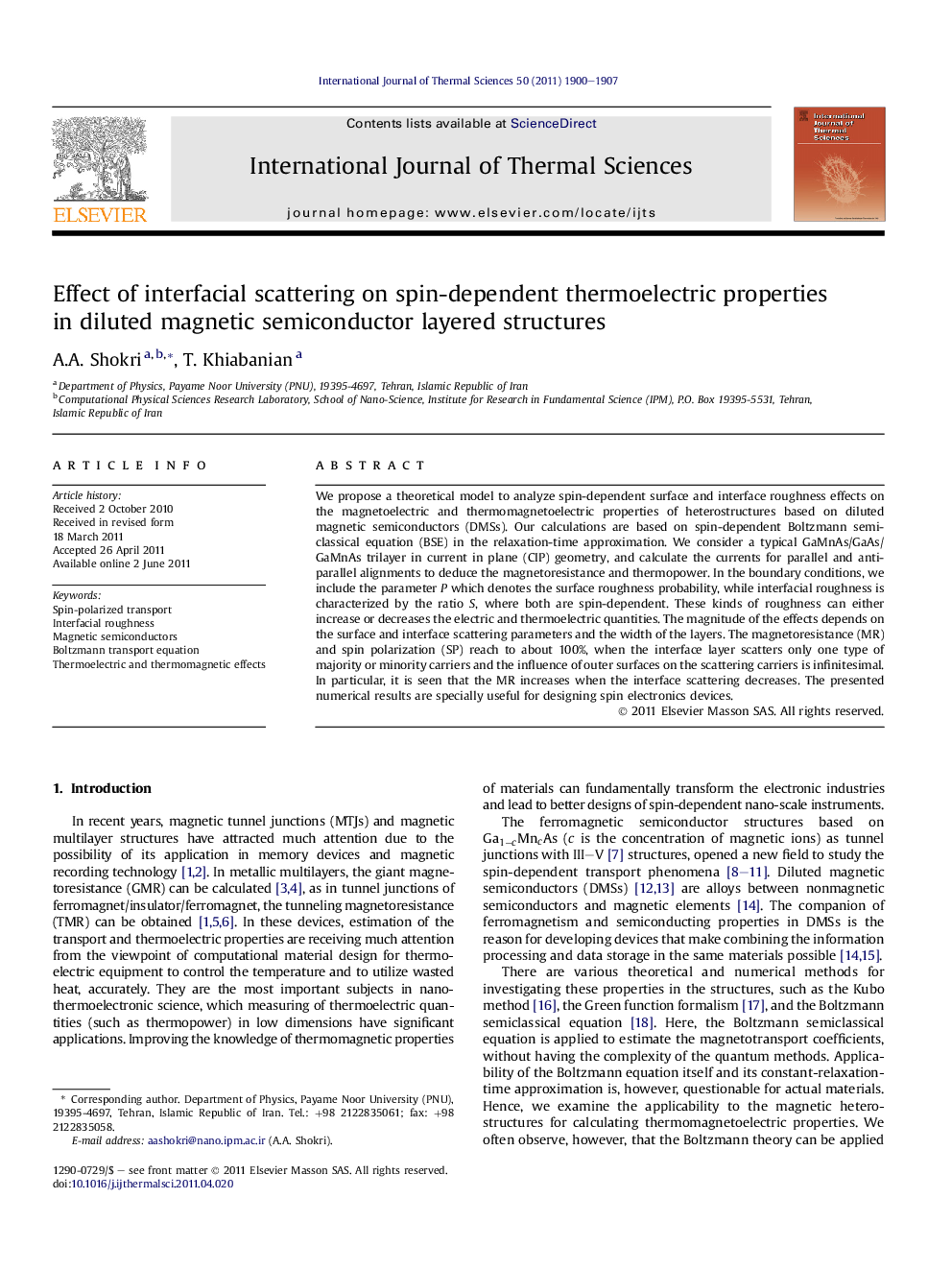| Article ID | Journal | Published Year | Pages | File Type |
|---|---|---|---|---|
| 669163 | International Journal of Thermal Sciences | 2011 | 8 Pages |
We propose a theoretical model to analyze spin-dependent surface and interface roughness effects on the magnetoelectric and thermomagnetoelectric properties of heterostructures based on diluted magnetic semiconductors (DMSs). Our calculations are based on spin-dependent Boltzmann semiclassical equation (BSE) in the relaxation-time approximation. We consider a typical GaMnAs/GaAs/GaMnAs trilayer in current in plane (CIP) geometry, and calculate the currents for parallel and anti-parallel alignments to deduce the magnetoresistance and thermopower. In the boundary conditions, we include the parameter P which denotes the surface roughness probability, while interfacial roughness is characterized by the ratio S, where both are spin-dependent. These kinds of roughness can either increase or decreases the electric and thermoelectric quantities. The magnitude of the effects depends on the surface and interface scattering parameters and the width of the layers. The magnetoresistance (MR) and spin polarization (SP) reach to about 100%, when the interface layer scatters only one type of majority or minority carriers and the influence of outer surfaces on the scattering carriers is infinitesimal. In particular, it is seen that the MR increases when the interface scattering decreases. The presented numerical results are specially useful for designing spin electronics devices.
